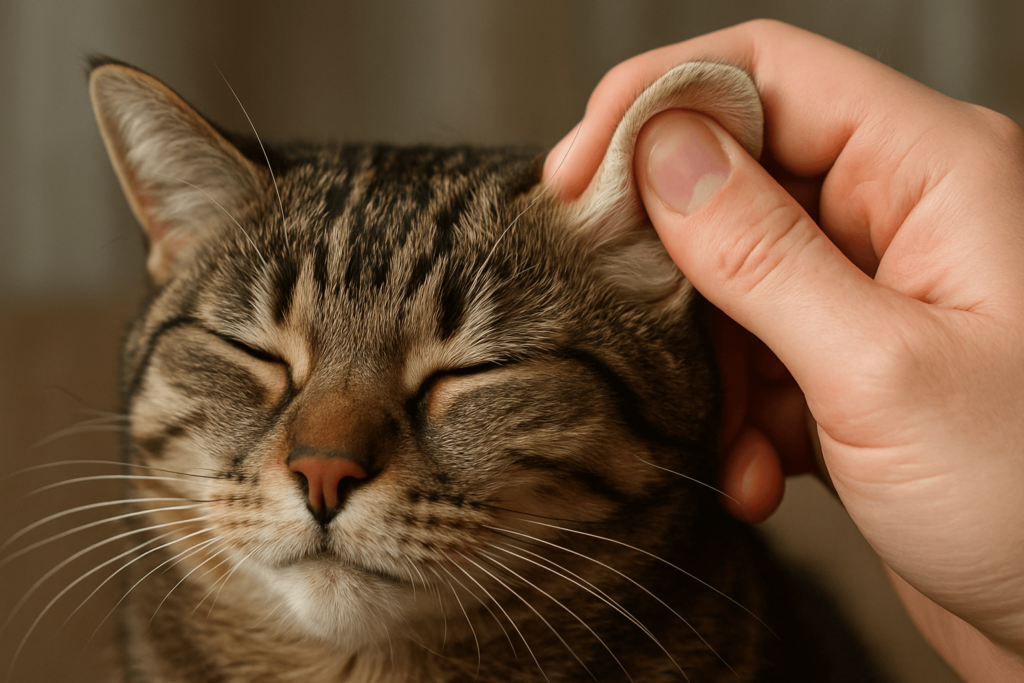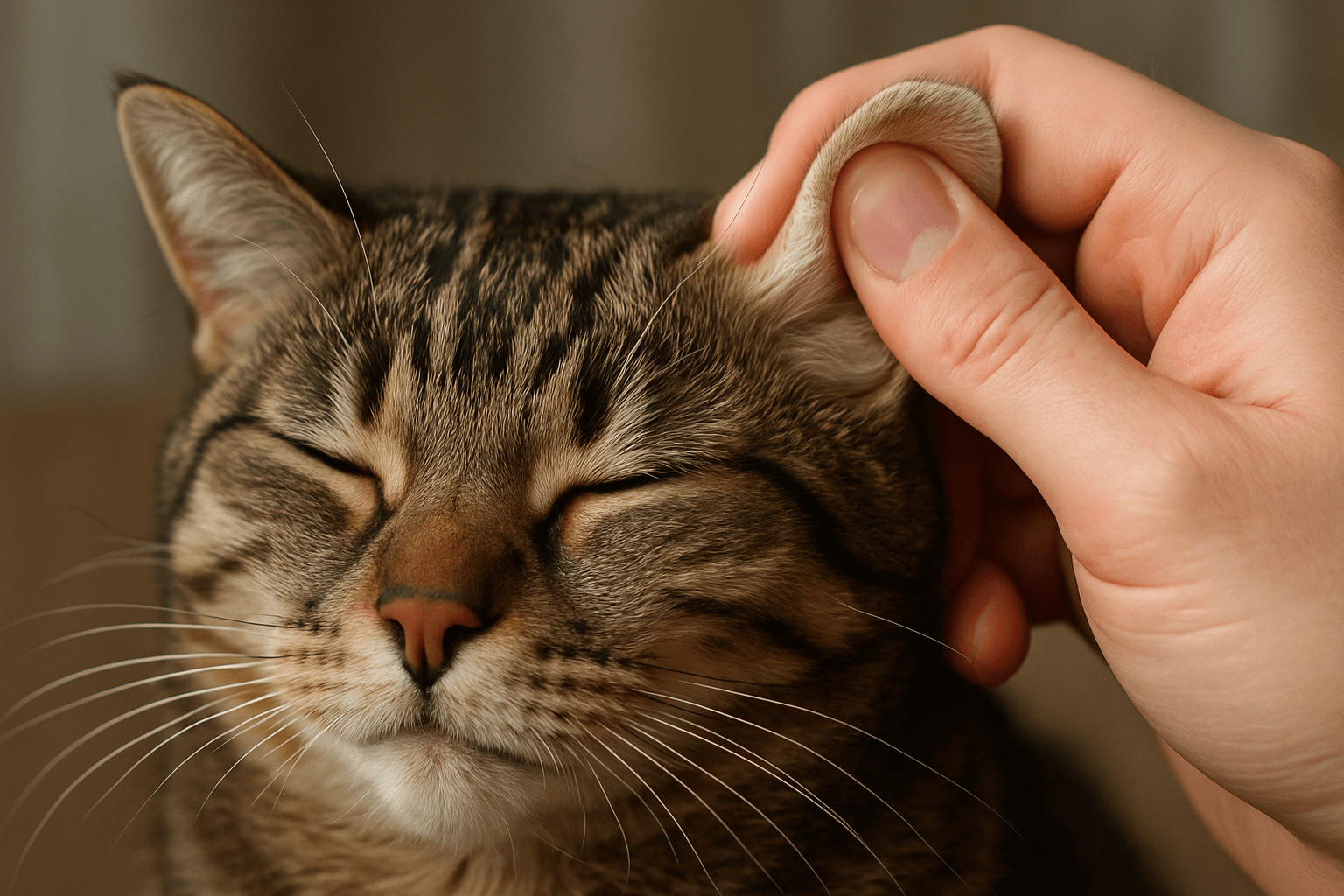Why Does a Cat Ear Squishy Sound Happen? The Surprising Truth Behind the Squeak
That soft, squishy, almost muffled pfft or squeak your cat makes when you gently press their ear — it’s oddly satisfying, strangely intimate, and completely normal. If you’ve ever heard it and wondered, “Is that supposed to happen?” — you’re not alone. The cat ear squishy sound isn’t a sign of illness, nor is it random noise. It’s a natural, physiological response rooted in feline anatomy and behavior. In this guide, we’ll uncover exactly why your cat’s ears make that peculiar sound, what it reveals about their health, and how to respond — or simply enjoy — this endearing quirk.
The Science Behind the Cat Ear Squishy Sound
Every time your cat’s ear makes that squishy noise, it’s a quiet symphony of biology at work. This isn’t just air moving — it’s a combination of anatomy, moisture, and sensation interacting in real time.
Cartilage Flexibility:
A cat’s ear flap (pinna) is made of thin, flexible cartilage covered in skin — not bone. When pressed, the cartilage compresses slightly, creating a soft, squelching sound as it shifts and rebounds.Skin and Fur Texture:
The thin skin over the ear traps tiny pockets of air. When pressure is applied, those air pockets are displaced, producing a muffled, squishy release — similar to gently squeezing a water-filled balloon.Ear Wax and Natural Oils:
A small amount of ear wax and sebaceous oils lubricate the inner ear canal. These substances add viscosity to the movement, enhancing the squishy acoustic effect.Blood Flow and Tissue Responsiveness:
The ear is rich in capillaries. Pressure temporarily alters blood flow, and the soft tissue responds with subtle vibrations that contribute to the sound.Your Cat’s Relaxation Response:
Most cats make this sound only when calm and trusting. The squishy noise often accompanies purring or slow blinking — signs they’re deeply relaxed.
This isn’t just noise — it’s a quiet signal of comfort. When your cat lets you press their ear and makes that sound, they’re telling you, without words, that they feel safe.

Why Some Cats Make the Sound More Than Others
Not every cat produces the ear squishy sound with equal frequency or volume. Individual variation is normal — and revealing.
Ear Shape and Thickness:
Cats with thinner, more delicate ears — like Siamese or Oriental Shorthairs — tend to produce louder, more noticeable squishy sounds due to less tissue resistance.Age and Skin Elasticity:
Kittens and younger cats often have more supple skin and cartilage, making the sound more pronounced. Older cats may produce less noticeable sounds as tissues firm up.Breed-Specific Anatomy:
Breeds with folded ears (like Scottish Folds) may produce different acoustic patterns due to altered cartilage structure — sometimes quieter, sometimes more resonant.Moisture Levels in the Ear Canal:
Cats with naturally oilier ears or those recently groomed may have more lubrication, enhancing the squishy effect.Individual Personality and Trust Level:
A cat who trusts you deeply is more likely to allow prolonged ear contact — increasing the chance you’ll hear the sound. A nervous cat may pull away before it happens.
If your cat rarely makes the sound, don’t worry — it doesn’t mean they’re unhealthy. It simply means their anatomy or comfort level makes it less audible. The absence of the sound is not a cause for concern.
Check this guide 👉Antibiotic for Cat Ear Infection: Best 7 Expert Tips!
Check this guide 👉Cat Ear Infection with Black Discharge: Best 7 Expert Tips!
Check this guide 👉Understanding Cat Ear Body Language: Best 7 Expert Tips!
| When the Sound Occurs | What It Likely Means |
|---|---|
| During gentle ear rubs or pressure | Sign of deep relaxation and trust |
| After grooming or bathing | Increased moisture enhances the squish |
| While purring or kneading | Indicates full-body contentment |
| Only when you touch the ear | A learned, positive association with you |
| When the cat is asleep | Muscle relaxation allows natural tissue movement |
Is the Cat Ear Squishy Sound a Sign of Health?
Many owners worry that any unusual sound from their cat’s ears signals infection or injury. In this case, the answer is reassuringly simple.
Normal Sound Characteristics:
The squishy noise is soft, brief, and occurs only under light pressure. It has no odor, no discharge, and causes no discomfort.No Pain or Avoidance:
If your cat leans into your touch, closes their eyes, or purrs — they’re enjoying it. Painful reactions include head shaking, ear flicking, or hissing.No Discharge or Odor:
Healthy ears are clean inside. A squishy sound accompanied by black debris, yellow pus, or foul smell indicates infection — not normal anatomy.Symmetrical Between Ears:
If only one ear makes the sound, it could be a structural quirk. But if one ear is suddenly quieter or louder than the other, consult your vet.Consistent Over Time:
The sound should remain consistent. Sudden changes in frequency, volume, or texture may warrant a check-up — but not panic.
The cat ear squishy sound is one of the most benign, even delightful, feline phenomena. It’s a biological byproduct of soft tissue and cartilage — not a symptom.
How to Safely Encourage the Sound (And Why You Should)
You don’t need to force it — but if your cat enjoys ear contact, gently encouraging the squishy sound can strengthen your bond.
Use Gentle Fingertips Only:
Never use nails, tools, or pressure. Light, circular pressure on the base of the ear is ideal.Choose Calm Moments:
Try during quiet times — after a nap, during cuddles, or while your cat is lounging in your lap.Pair with Positive Reinforcement:
Offer a treat or soft praise immediately after the sound occurs. This reinforces trust and makes the experience rewarding.Respect Boundaries:
If your cat pulls away, stops purring, or looks away — stop immediately. Not all cats enjoy ear contact, even if they tolerate it.Observe Their Body Language:
Slow blinking, ear twitches toward you, and relaxed tail movement mean they’re comfortable. Tense muscles or flattened ears mean it’s time to stop.
This isn’t about making your cat perform — it’s about sharing a quiet, intimate moment. The squishy sound is a gift they offer when they feel completely safe.
What to Do If the Sound Changes or Comes with Other Symptoms
While the normal squishy sound is harmless, sudden changes can signal trouble. Know the difference.
Loud Popping or Cracking Sounds:
May indicate ear canal inflammation, fluid buildup, or cartilage damage — especially if accompanied by head tilting.Squishy Sound + Head Shaking:
Could point to ear mites, infection, or foreign objects in the ear canal.Discharge or Odor with the Sound:
Black, waxy debris = possible ear mites. Yellow/green pus = bacterial infection. Both require vet care.One Ear Much Quieter Than the Other:
Could indicate swelling, fluid, or a growth altering tissue movement.Cat Avoids Ear Touch Completely:
If your cat used to enjoy ear rubs but now flinches — check for pain, ticks, or skin lesions.
If any of these signs appear, schedule a vet visit. The normal squishy sound is soft, silent to others, and joyful. Anything loud, painful, or persistent is not.
The Emotional Connection: Why We Love the Cat Ear Squishy Sound
There’s a reason this sound goes viral on TikTok and Instagram. It’s not just cute — it’s emotionally resonant.
It Feels Like a Secret:
The sound is quiet, personal, and intimate — something only you and your cat share. It creates a sense of exclusivity and trust.It’s a Non-Verbal “I Love You”:
Your cat doesn’t say “I trust you.” But when they let you press their ear and make that sound — they’re saying it louder than words.It Reduces Human Stress:
Studies show that listening to soft, rhythmic animal sounds lowers cortisol. The squishy noise is a gentle, repetitive, soothing audio cue.It Connects Us to Our Cat’s Biology:
Hearing the sound reminds us that cats aren’t just pets — they’re living, breathing, anatomically complex creatures with quiet, beautiful inner workings.It’s a Moment of Pure Presence:
In a noisy world, the cat ear squishy sound pulls you into stillness. It demands nothing — only presence. And that’s rare.
This sound isn’t just an acoustic quirk. It’s a moment of connection — a tiny, squishy whisper of feline love.
Myths About the Cat Ear Squishy Sound — Busted
Misinformation spreads fast. Let’s clear up the most common myths.
Myth: “It means there’s fluid in the ear.”
False. The sound comes from skin and cartilage compression — not internal fluid. Fluid buildup would cause pain and discharge.Myth: “Only certain breeds make this sound.”
False. All cats can — but visibility depends on ear structure and your touch. Even long-haired cats make it.Myth: “You’re hurting your cat.”
False. If your cat is relaxed, they’re fine. Pain would trigger avoidance — not purring.Myth: “It’s a sign of ear mites.”
False. Ear mites cause scratching, head shaking, and dark debris — not a soft squish. Confusing the two is common but incorrect.Myth: “Cats do this to get treats.”
False. The sound is involuntary. Cats don’t control it — they simply allow you to trigger it by being calm and trusted.
Understanding the truth helps you appreciate the sound — not fear it.
Frequently Asked Questions About the Cat Ear Squishy Sound
Is the cat ear squishy sound normal?
Yes — absolutely. It’s a natural, harmless result of soft tissue and cartilage movement under light pressure.
Why does my cat close their eyes when I press their ear?
Closing their eyes is a sign of deep trust and relaxation. It’s their version of a hug.
Can I make my cat produce the sound on command?
Not directly — but by building trust and using gentle touch during calm moments, you increase the chances.
My cat hates ear touching. Will they ever like it?
Some never will — and that’s okay. Never force it. Respect their boundaries. Bonding happens in many ways.
Does the sound mean my cat has ear wax?
Not necessarily. A little wax is normal and may enhance the sound, but the squishy noise itself comes from skin and cartilage, not wax buildup.
Embrace the Squish: A Quiet Gift from Your Cat
The cat ear squishy sound is one of those small, unspoken miracles of pet ownership — quiet, fleeting, and deeply personal. It doesn’t come with a manual, a warning label, or a price tag. It simply appears when your cat feels safe enough to let their guard down. In a world where cats are often seen as aloof or distant, this sound is proof that they’re not just with you — they’re with you, fully. They’re trusting you with their most delicate, vulnerable anatomy. And in return, they give you a sound only you can hear — a soft, squishy whisper that says, I’m here. I’m calm. I’m yours.
Canned Pumpkin for Cat Diarrhea: Best 7 Expert Tips! Natural remedy to firm stools, soothe upset bellies, and support gut health safely.
Can a Cat Give You Scabies? Best 7 Expert Tips! Discover the truth about feline mites, human skin risks, and how to protect yourself—without panic.
Cat Flea vs Human Flea: Best 7 Expert Tips! Discover the truth about bites, species, and how to eliminate infestations for good.
Weird Cat Behaviors: Best 7 Expert Tips! Discover why cats do strange things—and how to understand, not punish, their instincts for a happier home.





